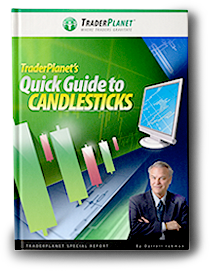Trends can be vexing for many traders. Because trends happen less frequently than congestion, we can easily get lulled into buying and selling the extremes. In a trend, this can be disastrous. Many traders who make good money fading short-lived market moves give it all back when a trend gets going. It can be hard to shift gears.
Making Trends Easy: The Right Multiple Time Frame Combo
Some traders use multiple time frames only for support and resistance. This feature is important, but multiple time frames can also be especially helpful in trend trading. Let’s see how their use can make trading trends easier.

The accompanying chart depicts a recent trading day in the S&P e-mini futures (symbol ES). The higher time frame 60-minute chart is on the left and the trading time fame of the 5-minute chart is on the right. This time frame combination is especially useful in day trading. A comparable combination for swing traders would be the weekly – daily.
Hourly Signals the First Buy Opportunity
Starting with the hourly, traders make a high at A, in the Asian/European session. The market falls sharply to B and then stabilizes. The US session begins during hourly bar C and we can see that buyers pushed the market up on good volume. Buyers were trying to take control of the market.
The 5-minute chart shows the push up to C. Volume on the 5-minute chart is captured in an indicator that measures wave or swing volume developed by David Weis. We see the volume growing on the rally up to C—a bullish indication.
The market reacts down to D and also shows hefty downside volume but notice that the sellers were unable to take price underneath the last hour’s low (bar C). Instead, we see buying at the lows on sizable up wave volume. We often see buyers and sellers struggle to take control of the market like this. The small reaction on light volume to T shows sellers giving up the fight. With sellers unable to take the market lower, this is the day’s first buy opportunity.
Hourly Says, “Hold the trade and look to add”
The market rallies and we see strong buying on the hourly bars D to E. Hourly E shows buyers drive the market above the overnight high on strong volume. Typically, volume recedes after the US open, but here, it remains sustained. There is fuel behind this morning rally. The hourly chart tells us we can hold our early long position and look for an opportunity to add on a pullback.
That pullback comes at F. After making new highs, the market comes back to test the overnight high. A straightforward trend channel on the 5-minute retracement shows when the market has become oversold and time to add to the morning trading position.
Hourly Signals Time to Exit
The trade is rewarded as the market drives higher to G and then reacts. Hourly G is the first 60-minute bar in the uptrend to close poorly. It tells us the trend is over. The 5-minute rally toward H shows up wave volume diminishes appreciably. Buyers are no longer willing to push price up, confirming hourly G. It’s a perfect signal to close the long positions on good profit.
We have been trading this chart by price and volume only. It’s an almost lost art, but you can learn more about reading the market by its own actions at the author’s website. Numerous blog posts discuss this style of trading, and you are invited to check it out. Just click here.




